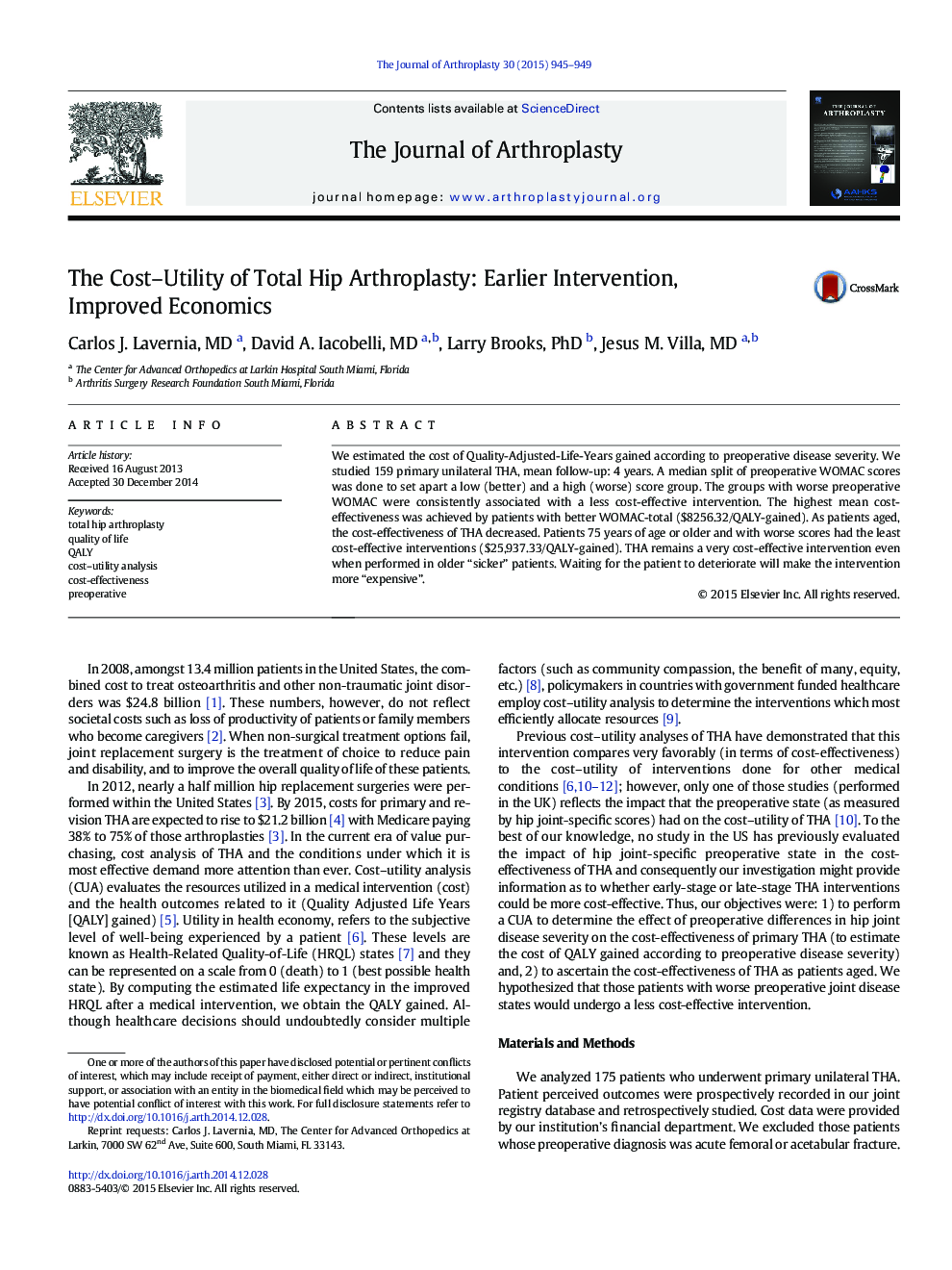| Article ID | Journal | Published Year | Pages | File Type |
|---|---|---|---|---|
| 6209158 | The Journal of Arthroplasty | 2015 | 5 Pages |
We estimated the cost of Quality-Adjusted-Life-Years gained according to preoperative disease severity. We studied 159 primary unilateral THA, mean follow-up: 4Â years. A median split of preoperative WOMAC scores was done to set apart a low (better) and a high (worse) score group. The groups with worse preoperative WOMAC were consistently associated with a less cost-effective intervention. The highest mean cost-effectiveness was achieved by patients with better WOMAC-total ($8256.32/QALY-gained). As patients aged, the cost-effectiveness of THA decreased. Patients 75Â years of age or older and with worse scores had the least cost-effective interventions ($25,937.33/QALY-gained). THA remains a very cost-effective intervention even when performed in older “sicker” patients. Waiting for the patient to deteriorate will make the intervention more “expensive”.
